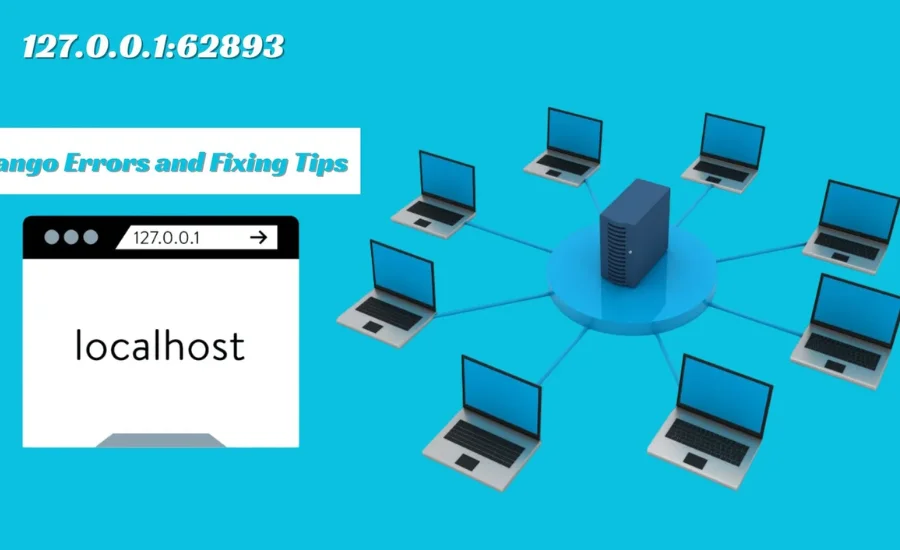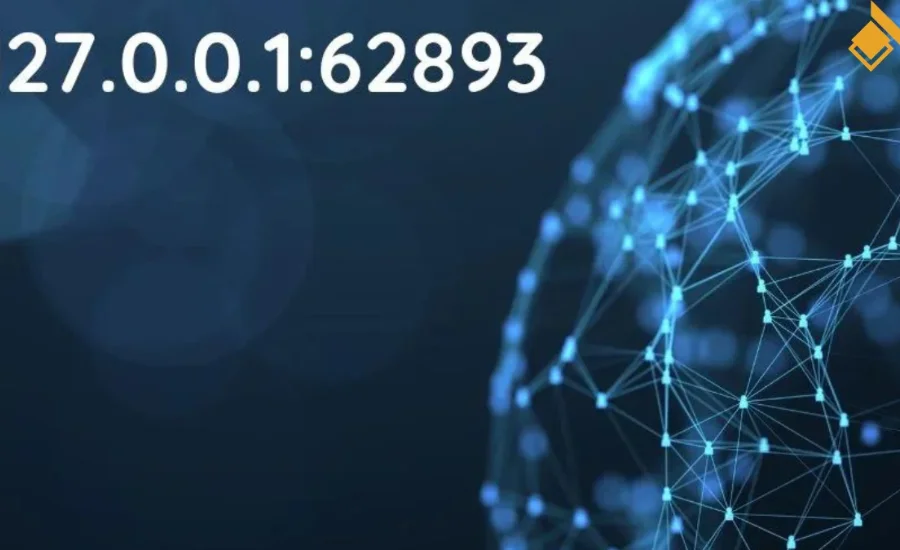Have you ever encountered the enigmatic code 127.0.0.1:62893 while navigating your computer? Despite its complexity, delving into its components can offer valuable insights! This error message, “Disconnected from the target VM, address: 127.0.0.1:62893,” often appears on the screen during the development process.
In this blog post, we’ll dissect the meaning of 127.0.0.1:62893, explain how it functions, and provide solutions for a common error linked to it.
Understanding 127.0.0.1:62893
This code comprises two essential parts:
127.0.0.1: This denotes a special IP address known as “localhost.” It serves as a loopback address, directing back to your own computer. Essentially, it facilitates internal communication within your system.
62893: This represents a port number, functioning as a gateway for various applications to transmit and receive data. While port 62893 isn’t as widely used as others, it’s occasionally employed by Memcached, a caching system.
Understanding 127.0.0.1: The Loopback Address
Introduction to Localhost IP Address
The IP address 127.0.0.1, also known as “localhost” or the loopback address, holds a significant role in networking. It serves as a special-purpose address designated for communication within an individual computer system. Unlike other IP addresses that facilitate external communication, 127.0.0.1 enables internal communication, bypassing the need for physical network interfaces.
Significance of Localhost
For both developers and IT specialists, Localhost proves to be an essential tool. It removes the need for an active internet connection by offering a controlled environment for software application testing. Developers can use 127.0.0.1 to simulate different network services, such web servers and databases, on their local computers. They can now carry out thorough testing and debugging procedures, guaranteeing flawless application functionality prior to launch.
Understanding the Mechanism of 127.0.0.1:62893

Internal Interaction
When an application on your device seeks to communicate with another process residing elsewhere, it employs the address 127.0.0.1:62893.
Utilizing Localhost
By designating the hostname as “localhost” (127.0.0.1), the application signals to the system its intent to engage with a process within the same host.
Port Identification
The accompanying port number (62893) instructs the operating system on the specific service or program designated to handle the communication.
Exploring Port 62893: A Networking Endpoint

Understanding the Concept of Ports
In the realm of networking, a port acts as a pivotal communication endpoint, facilitating the exchange of data among various services and applications across a network infrastructure. Each port is identified by a unique numerical value within the range of 0 to 65535, with each number being assigned to a specific service or application. Ports play a crucial role in enabling multiple services to operate concurrently on a single IP address without causing interference or conflicts.
Unveiling the Importance of Port 62893
Port 62893 emerges as an arbitrary port number frequently utilized within development and testing environments. Although it does not inherently correspond to any standardized service, developers often allocate it for bespoke applications or services during the developmental phase. Opting for a higher-numbered port like 62893 serves to mitigate the likelihood of clashes with well-established ports reserved for standard services, such as HTTP on port 80 or HTTPS on port 443.
Exploring the Practical Applications of 127.0.0.1:62893
Empowering Local Development and Testing
A pivotal application of 127.0.0.1:62893 lies in local development and testing endeavors. Developers frequently configure web servers, database servers, and assorted network services to listen on this address and port. This setup grants them the ability to meticulously test applications in an insulated environment, ensuring that modifications made do not impact live environments adversely. For instance, a developer might utilize a local web server stationed on 127.0.0.1:62893 to assess a new feature of a web application before rolling it out to a production server.
Enhancing Security and Privacy Measures

Utilizing 127.0.0.1:62893 bolsters security and privacy protocols during the developmental phase. Since the loopback address precludes the exposure of services to external networks, developers can conduct secure application testing within their local ecosystem. This segregation effectively safeguards sensitive data and configurations from external infiltration. For example, a developer engrossed in refining a sensitive database application can confidently operate it on 127.0.0.1:62893, thus ensuring that the database remains shielded from potential external threats.
Is Port 62893 Safe to Expose Publicly?
In general, exposing port 62893 publicly is not advisable due to several reasons:
1. Security Vulnerabilities: If Memcached, a caching system, is running on this port and contains vulnerabilities, it can be exploited by attackers to infiltrate your system.
2. Denial-of-Service (DoS) Attacks: Malicious actors may target port 62893 with DoS attacks, flooding your system with traffic and causing it to crash.
3. Unauthorized Access: Opening port 62893 to the public internet increases the risk of unauthorized individuals attempting to access your Memcached server, potentially compromising sensitive data.
Fixing Errors
This error often arises when using development tools like VS Code. Here are steps to rectify it:
1. Check the Service: Ensure that the application or service you’re trying to access is running properly.
2. Verify Port Number: Confirm that the application configuration matches the specified port number (62893).
3. Firewall Settings: Ensure that your firewall settings do not block access to port 62893 for local connections.
Error Resolution Steps:

- Start the Service: If the service is inactive, initiate it using appropriate commands or scripts.
- Change Port Numbers: If a port conflict exists, configure the application to utilize a different port in its settings.
- Configure Firewall: Create an exception rule in your firewall to permit traffic on port 62893 for localhost.
- Windows: Navigate to Control Panel > System and Security > Windows Defender Firewall > Advanced Settings > Inbound Rules. Generate a new rule for port 62893.
- Mac/Linux: Utilize terminal commands like iptables to adjust firewall settings.
- Application-Specific Configuration: Consult the application’s documentation for any specific configuration prerequisites.
- Network Diagnostic Tools: Employ tools such as netstat (Windows) or lsof (Unix/Linux) to ascertain if any application is currently utilizing port 62893.
Need Further Assistance?
If none of the aforementioned solutions resolve the issue, consider seeking guidance from software documentation or consulting with a software developer or agency. Orage Technologies provides comprehensive IT solutions, including:
- Application Development: Our adept developer team adeptly handles various errors, including the “Disconnected from the target VM, address: 127.0.0.1:62893” error.
- Website Design and Development: We not only rectify errors but also develop flawlessly functioning websites.
- Cloud Solutions: Benefit from our cloud solutions for secure data storage and management.
- Cybersecurity: Ensure robust online security by availing services from a reputable cybersecurity company in case of any error-related concerns.
Also read This: GoldenGateMax.shop
Final Words
Have you ever navigated your computer and come across the mysterious code 127.0.0.1:62893? During development, the error message “Disconnected from the target VM, address: 127.0.0.1:62893” frequently shows up. We’ll analyze its meaning and offer answers in this blog post.
Comprehending 127.0.0.1:62893 shows two components: “62893” is a port number, frequently utilized by programs such as Memcached, and “127.0.0.1” is the localhost, which facilitates internal communication. Localhost enables testing in a controlled environment without an internet connection. Port 62893, although arbitrary, is crucial for development and testing.
If you encounter this error, check that the service is running, verify the port number, and adjust firewall settings to allow traffic on port 62893. For further assistance, consult application documentation or reach out to IT experts like Orage Technologies, who offer comprehensive development and cybersecurity solutions.
Keep yourself informed with Alevemente to stay up-to-date with the latest news and updates on all your favorite topics!




